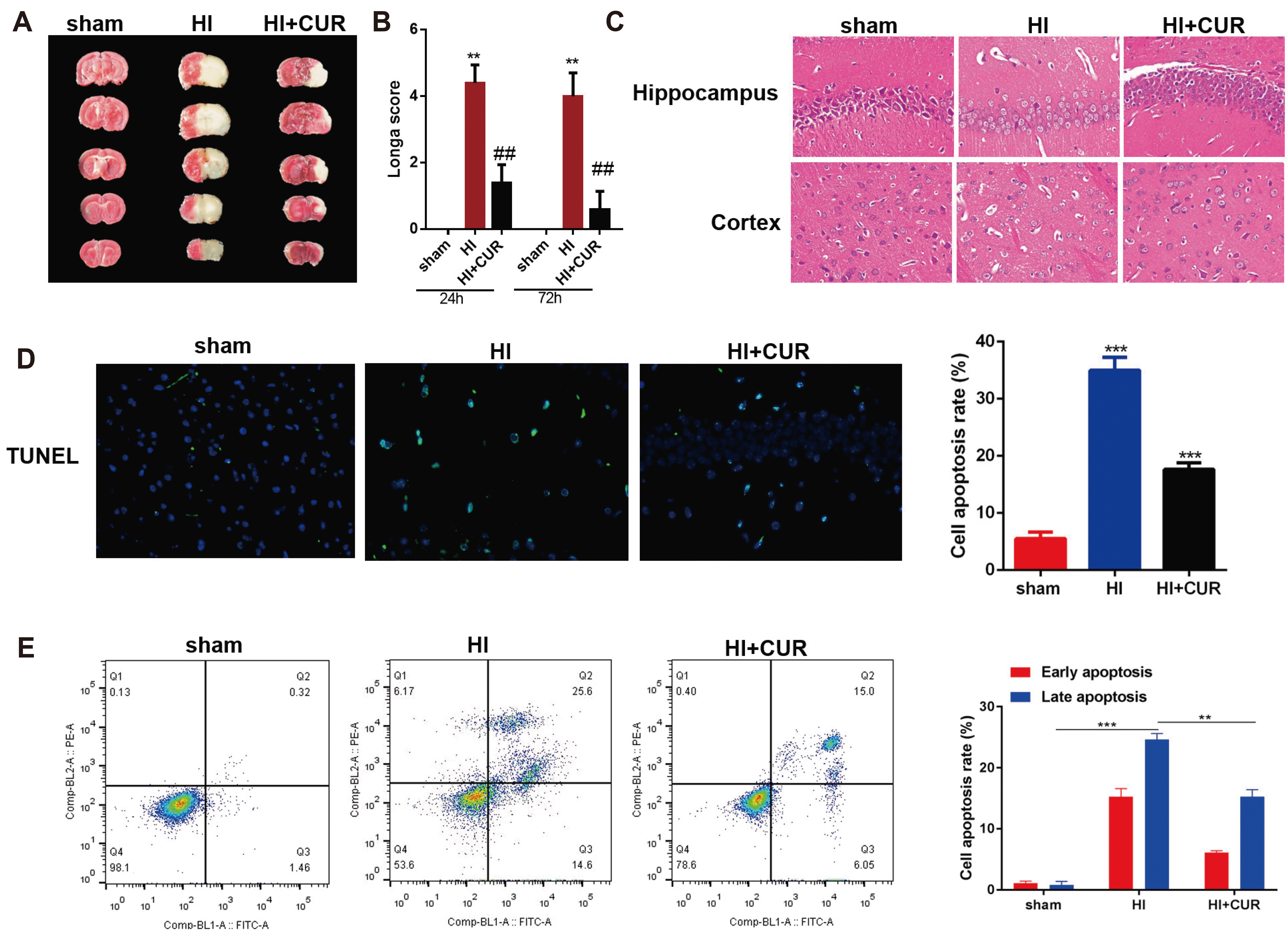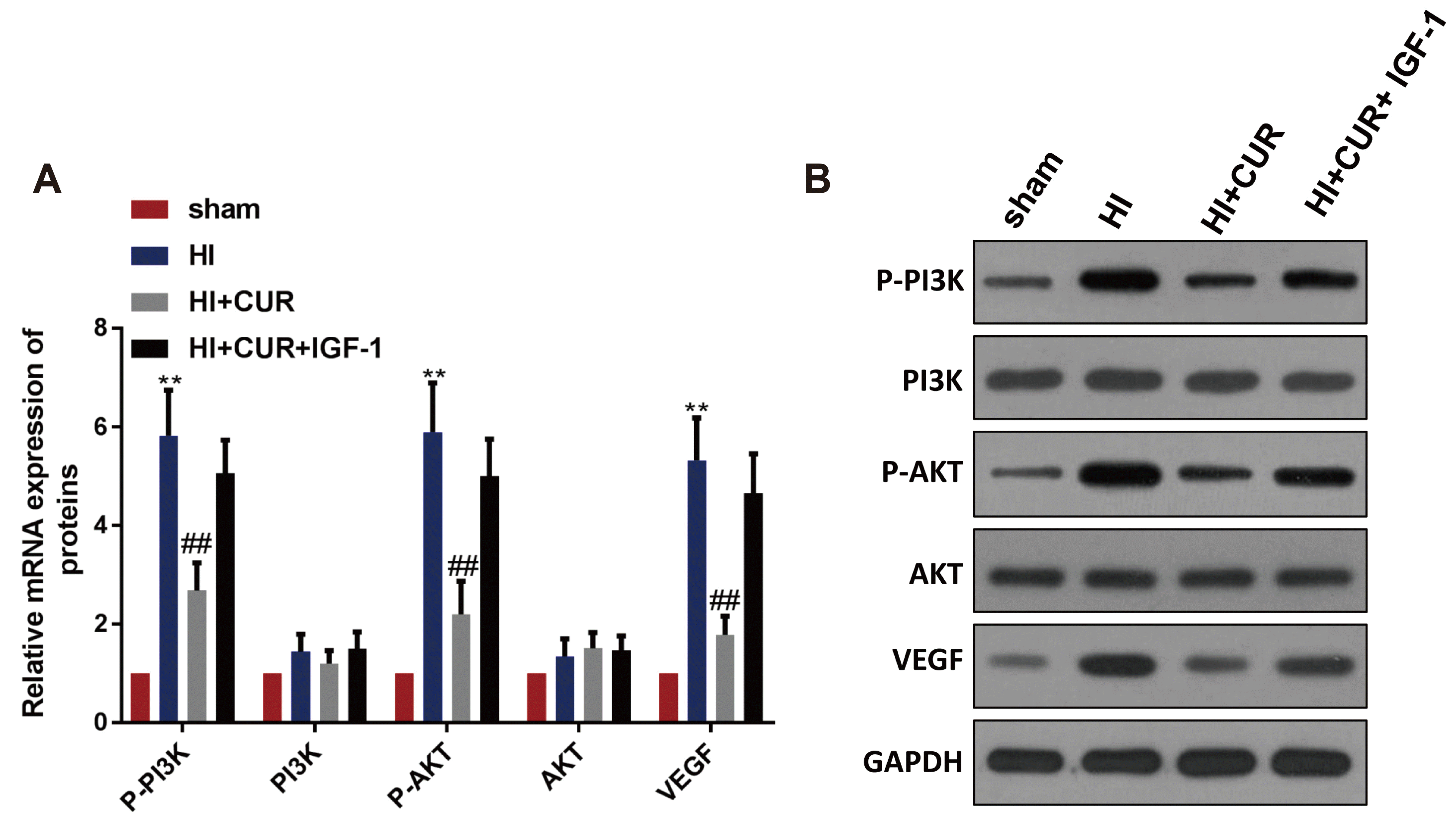2. Logitharajah P, Rutherford MA, Cowan FM. 2009; Hypoxic-ischemic encephalopathy in preterm infants: antecedent factors, brain imaging, and outcome. Pediatr Res. 66:222–229. DOI:
10.1203/PDR.0b013e3181a9ef34. PMID:
19390490.

3. Kharoshankaya L, Stevenson NJ, Livingstone V, Murray DM, Murphy BP, Ahearne CE, Boylan GB. 2016; Seizure burden and neurodevelopmental outcome in neonates with hypoxic-ischemic encephalopathy. Dev Med Child Neurol. 58:1242–1248. DOI:
10.1111/dmcn.13215. PMID:
27595841. PMCID:
PMC5214689.

4. Lundgren C, Brudin L, Wanby AS, Blomberg M. 2018; Ante- and intrapartum risk factors for neonatal hypoxic ischemic encephalopathy. J Matern Fetal Neonatal Med. 31:1595–1601. DOI:
10.1080/14767058.2017.1321628. PMID:
28486858.

5. Northington FJ, Chavez-Valdez R, Martin LJ. 2011; Neuronal cell death in neonatal hypoxia-ischemia. Ann Neurol. 69:743–758. DOI:
10.1002/ana.22419. PMID:
21520238. PMCID:
PMC4000313.

6. Shankaran S. 2012; Hypoxic-ischemic encephalopathy and novel strategies for neuroprotection. Clin Perinatol. 39:919–929. DOI:
10.1016/j.clp.2012.09.008. PMID:
23164187.

7. Dixon BJ, Reis C, Ho WM, Tang J, Zhang JH. 2015; Neuroprotective strategies after neonatal hypoxic ischemic encephalopathy. Int J Mol Sci. 16:22368–22401. DOI:
10.3390/ijms160922368. PMID:
26389893. PMCID:
PMC4613313.
8. Ek CJ, D'Angelo B, Baburamani AA, Lehner C, Leverin AL, Smith PL, Nilsson H, Svedin P, Hagberg H, Mallard C. 2015; Brain barrier properties and cerebral blood flow in neonatal mice exposed to cerebral hypoxia-ischemia. J Cereb Blood Flow Metab. 35:818–827. DOI:
10.1038/jcbfm.2014.255. PMID:
25627141. PMCID:
PMC4420855.

9. Storkebaum E, Lambrechts D, Carmeliet P. 2004; VEGF: once regarded as a specific angiogenic factor, now implicated in neuroprotection. Bioessays. 26:943–954. DOI:
10.1002/bies.20092. PMID:
15351965.

10. Silverman WF, Krum JM, Mani N, Rosenstein JM. 1999; Vascular, glial and neuronal effects of vascular endothelial growth factor in mesencephalic explant cultures. Neuroscience. 90:1529–1541. DOI:
10.1016/S0306-4522(98)00540-5. PMID:
10338318.

11. Guo H, Zhou H, Lu J, Qu Y, Yu D, Tong Y. 2016; Vascular endothelial growth factor: an attractive target in the treatment of hypoxic/ischemic brain injury. Neural Regen Res. 11:174–179. DOI:
10.4103/1673-5374.175067. PMID:
26981109. PMCID:
PMC4774214.

12. Howes MR, Fang R, Houghton PJ. 2017; Effect of Chinese herbal medicine on Alzheimer's disease. Int Rev Neurobiol. 135:29–56. DOI:
10.1016/bs.irn.2017.02.003. PMID:
28807163.

13. Ip FC, Zhao YM, Chan KW, Cheng EY, Tong EP, Chandrashekar O, Fu GM, Zhao ZZ, Ip NY. 2016; Neuroprotective effect of a novel Chinese herbal decoction on cultured neurons and cerebral ischemic rats. BMC Complement Altern Med. 16:437. DOI:
10.1186/s12906-016-1417-1. PMID:
27814708. PMCID:
PMC5097373.

14. Huang L, Chen C, Zhang X, Li X, Chen Z, Yang C, Liang X, Zhu G, Xu Z. 2018; Neuroprotective effect of curcumin against cerebral ischemia-reperfusion via mediating autophagy and inflammation. J Mol Neurosci. 64:129–139. DOI:
10.1007/s12031-017-1006-x. PMID:
29243061.

15. Cui X, Song H, Su J. 2017; Curcumin attenuates hypoxic-ischemic brain injury in neonatal rats through induction of nuclear factor erythroid-2-related factor 2 and heme oxygenase-1. Exp Ther Med. 14:1512–1518. DOI:
10.3892/etm.2017.4683. PMID:
28781627. PMCID:
PMC5526188.

16. Huang Y, Mao Y, Li H, Shen G, Nan G. 2018; Knockdown of Nrf2 inhibits angiogenesis by downregulating VEGF expression through PI3K/Akt signaling pathway in cerebral microvascular endothelial cells under hypoxic conditions. Biochem Cell Biol. 96:475–482. DOI:
10.1139/bcb-2017-0291. PMID:
29373803.

17. Ren X, Ma H, Zuo Z. 2016; Dexmedetomidine postconditioning reduces brain injury after brain hypoxia-ischemia in neonatal rats. J Neuroimmune Pharmacol. 11:238–247. DOI:
10.1007/s11481-016-9658-9. PMID:
26932203.

18. Jiang J, Wang W, Sun YJ, Hu M, Li F, Zhu DY. 2007; Neuroprotective effect of curcumin on focal cerebral ischemic rats by preventing blood-brain barrier damage. Eur J Pharmacol. 561:54–62. DOI:
10.1016/j.ejphar.2006.12.028. PMID:
17303117.

19. Rong Z, Pan R, Chang L, Lee W. 2015; Combination treatment with ethyl pyruvate and IGF-I exerts neuroprotective effects against brain injury in a rat model of neonatal hypoxic-ischemic encephalopathy. Int J Mol Med. 36:195–203. DOI:
10.3892/ijmm.2015.2219. PMID:
25999282. PMCID:
PMC4494588.

20. Feng Y, Rhodes PG, Bhatt AJ. 2008; Neuroprotective effects of vascular endothelial growth factor following hypoxic ischemic brain injury in neonatal rats. Pediatr Res. 64:370–374. DOI:
10.1203/PDR.0b013e318180ebe6. PMID:
18535483.

21. Belinga VF, Wu GJ, Yan FL, Limbenga EA. 2016; Splenectomy following MCAO inhibits the TLR4-NF-κB signaling pathway and protects the brain from neurodegeneration in rats. J Neuroimmunol. 293:105–113. DOI:
10.1016/j.jneuroim.2016.03.003. PMID:
27049570.

22. Sundar Dhilip Kumar S, Houreld NN, Abrahamse H. 2018; Therapeutic potential and recent advances of curcumin in the treatment of aging-associated diseases. Molecules. 23:835. DOI:
10.3390/molecules23040835. PMID:
29621160. PMCID:
PMC6017430.

23. Yu L, Fan Y, Ye G, Li J, Feng X, Lin K, Dong M, Wang Z. 2015; Curcumin inhibits apoptosis and brain edema induced by hypoxia-hypercapnia brain damage in rat models. Am J Med Sci. 349:521–525. DOI:
10.1097/MAJ.0000000000000457. PMID:
25867253.

24. Wang B, Li W, Jin H, Nie X, Shen H, Li E, Wang W. 2018; Curcumin attenuates chronic intermittent hypoxia-induced brain injuries by inhibiting AQP4 and p38 MAPK pathway. Respir Physiol Neurobiol. 255:50–57. DOI:
10.1016/j.resp.2018.05.006. PMID:
29758366.

25. Joseph A, Wood T, Chen CC, Corry K, Snyder JM, Juul SE, Parikh P, Nance E. 2018; Curcumin-loaded polymeric nanoparticles for neuroprotection in neonatal rats with hypoxic-ischemic encephalopathy. Nano Res. 11:5670–5688. DOI:
10.1007/s12274-018-2104-y.

26. Liu L, Zhang W, Wang L, Li Y, Tan B, Lu X, Deng Y, Zhang Y, Guo X, Mu J, Yu G. 2014; Curcumin prevents cerebral ischemia reperfusion injury via increase of mitochondrial biogenesis. Neurochem Res. 39:1322–1331. DOI:
10.1007/s11064-014-1315-1. PMID:
24777807.

27. Zhu HT, Bian C, Yuan JC, Chu WH, Xiang X, Chen F, Wang CS, Feng H, Lin JK. 2014; Curcumin attenuates acute inflammatory injury by inhibiting the TLR4/MyD88/NF-κB signaling pathway in experimental traumatic brain injury. J Neuroinflammation. 11:59. DOI:
10.1186/1742-2094-11-59. PMID:
24669820. PMCID:
PMC3986937.

28. Dore-Duffy P, Wang X, Mehedi A, Kreipke CW, Rafols JA. 2007; Differential expression of capillary VEGF isoforms following traumatic brain injury. Neurol Res. 29:395–403. DOI:
10.1179/016164107X204729. PMID:
17626736.

29. Chaitanya GV, Cromer WE, Parker CP, Couraud PO, Romero IA, Weksler B, Mathis JM, Minagar A, Alexander JS. 2013; A recombinant inhibitory isoform of vascular endothelial growth factor164/165 aggravates ischemic brain damage in a mouse model of focal cerebral ischemia. Am J Pathol. 183:1010–1024. DOI:
10.1016/j.ajpath.2013.06.009. PMID:
23906811.

30. Baburamani AA, Castillo-Melendez M, Walker DW. 2013; VEGF expression and microvascular responses to severe transient hypoxia in the fetal sheep brain. Pediatr Res. 73:310–316. DOI:
10.1038/pr.2012.191. PMID:
23222909.

31. Sköld MK, Risling M, Holmin S. 2006; Inhibition of vascular endothelial growth factor receptor 2 activity in experimental brain contusions aggravates injury outcome and leads to early increased neuronal and glial degeneration. Eur J Neurosci. 23:21–34. DOI:
10.1111/j.1460-9568.2005.04527.x. PMID:
16420412.

33. Moriyama Y, Takagi N, Hashimura K, Itokawa C, Tanonaka K. 2013; Intravenous injection of neural progenitor cells facilitates angiogenesis after cerebral ischemia. Brain Behav. 3:43–53. DOI:
10.1002/brb3.113. PMID:
23532762. PMCID:
PMC3607146.

34. Pan Z, Zhuang J, Ji C, Cai Z, Liao W, Huang Z. 2018; Curcumin inhibits hepatocellular carcinoma growth by targeting VEGF expression. Oncol Lett. 15:4821–4826. DOI:
10.3892/ol.2018.7988. PMID:
29552121. PMCID:
PMC5840714.

35. Lu CW, Hao JL, Yao L, Li HJ, Zhou DD. 2017; Efficacy of curcumin in inducing apoptosis and inhibiting the expression of VEGF in human pterygium fibroblasts. Int J Mol Med. 39:1149–1154. DOI:
10.3892/ijmm.2017.2944. PMID:
28393179. PMCID:
PMC5403353.

36. Li X, Fang Q, Tian X, Wang X, Ao Q, Hou W, Tong H, Fan J, Bai S. 2017; Curcumin attenuates the development of thoracic aortic aneurysm by inhibiting VEGF expression and inflammation. Mol Med Rep. 16:4455–4462. DOI:
10.3892/mmr.2017.7169. PMID:
28791384. PMCID:
PMC5647005.

37. Cardona-Gomez GP, Mendez P, Garcia-Segura LM. 2002; Synergistic interaction of estradiol and insulin-like growth factor-I in the activation of PI3K/Akt signaling in the adult rat hypothalamus. Brain Res Mol Brain Res. 107:80–88. DOI:
10.1016/S0169-328X(02)00449-7.

38. Aberg ND, Brywe KG, Isgaard J. 2006; Aspects of growth hormone and insulin-like growth factor-I related to neuroprotection, regeneration, and functional plasticity in the adult brain. ScientificWorldJournal. 6:53–80. DOI:
10.1100/tsw.2006.22. PMID:
16432628. PMCID:
PMC5917186.
39. Guan J, Mathai S, Liang HP, Gunn AJ. 2013; Insulin-like growth factor-1 and its derivatives: potential pharmaceutical application for treating neurological conditions. Recent Pat CNS Drug Discov. 8:142–160. DOI:
10.2174/1574889811308020004. PMID:
23597305.

40. Sun L, Huang T, Xu W, Sun J, Lv Y, Wang Y. 2017; Advanced glycation end products promote VEGF expression and thus choroidal neovascularization via Cyr61-PI3K/AKT signaling pathway. Sci Rep. 7:14925. DOI:
10.1038/s41598-017-14015-6. PMID:
29097668. PMCID:
PMC5668426.

41. Ye L, Wang X, Cai C, Zeng S, Bai J, Guo K, Fang M, Hu J, Liu H, Zhu L, Liu F, Wang D, Hu Y, Pan S, Li X, Lin L, Lin Z. 2019; FGF21 promotes functional recovery after hypoxic-ischemic brain injury in neonatal rats by activating the PI3K/Akt signaling pathway via FGFR1/β-klotho. Exp Neurol. 317:34–50. DOI:
10.1016/j.expneurol.2019.02.013. PMID:
30802446.

42. Luo Z, Zhang M, Niu X, Wu D, Tang J. 2019; Inhibition of the PI3K/Akt signaling pathway impedes the restoration of neurological function following hypoxic-ischemic brain damage in a neonatal rabbit model. J Cell Biochem. 120:10175–10185. DOI:
10.1002/jcb.28302. PMID:
30614032.









 PDF
PDF Citation
Citation Print
Print


 XML Download
XML Download